“DON’T snap the GUNS.”
If you’ve ever stepped into one of those old gun shops, the kind run by an old guy with a gun on his hip, you’ve heard the words above…
In fact, there’s a very good chance you have pre-programmed into your skull the notion that dry-firing is BAD.
Maybe you’re just superstitious, in that way that those of us who learned to shoot in the seventies and eighties tend to be. You know; you’re firmly convinced that ball ammo cycles more reliably in your autos, you’ve actually contemplated the use of “slide grease,” and you firmly believe that dry firing will snap the firing pin in your gun (unless it breaks something ELSE).
Well, to a certain extent, this is true, but it’s true of only certain guns.
I’ll show you why you may want to ignore those old growls you used to hear. And why it may just save your life. Let’s get started…
If you’ve got a pot-metal, mostly-zinc Saturday Night Ring of Fire Special in your arsenal, like a Raven .25 automatic, then yes, you don’t want to dry fire the weapon any more than you have to. (You actually have to pull the trigger on an empty chamber in order to disengage the striker on the gun, or you can’t disassemble it.)
With a gun like that, if you spent a morning cocking it and pulling the trigger on an empty chamber, there’s a pretty good chance you could break that cheap firing pin, yes. This is true of other cheap guns as well.
Now let’s look at the other end of the spectrum. Say you’ve got a Glock, which is another striker-fired gun. If that gun is used at, say, a training academy, and it gets used day in and day out, and thousands of rounds go through it, and trainees are dry-firing the crap out of that thing day in and day out, then yes, eventually, something’s going to break.
The reality of modern firearms is squarely in the middle of those two extremes. A well-made, brand-name, modern firearm can be dry fired for practice now and again without doing any major damage to the firearm.
Dry-firing lets you practice drawing, presenting, and pulling the trigger on your carry gun. It lets you feel what the trigger break is like. This type of training, while it doesn’t include the recoil of the actual shot going down range, can be invaluable in familiarizing you with your weapon… and with your sights.
If you’re serious about self-defense with a handgun, you should spend enough time staring down those sights that you memorize what they look like — every flaw, every scratch, every bump in the finish and every dimple in the paint.
Dry firing familiarizes you with your weapon and how it feels, what it weighs, how it handles when you manipulate it, and everything else about carrying and using it (EXCEPT for actually launching a shot). Most importantly, dry fire practice costs absolutely nothing.
Your weapon, provided it is of good quality from a reputable manufacturer, will endure a moderate amount of dry firing. You shouldn’t do it all day every day, of course, but dry-fire practice with your weapon once a week shouldn’t harm it anytime soon.
You should strive to make regular dry fire practice part of your training regimen. Work it into your routine. Do it at the same time every week. You’ll see real benefits if you do. But dry fire practice isn’t just playing around, snapping the trigger of your weapon. There are specific drills you can do to hone your skills through using dry fire.
We will give you one of them here…
Safety First. Every. Single. Time.
First, check your weapon to make sure it is unloaded. Remove the magazine, check that, and check the barrel with the slide locked open and your finger in the chamber. Once you have prepared the empty weapon, repeat the process and work the slide back and forth a few times. When you’re all done checking the gun to make sure it is unloaded… CHECK IT AGAIN.
The idea is that you want to make your dry fire practice as safe as you can. Keep all live ammunition out of the training area. If you practice magazine changes, make sure you have individually checked all magazines to ensure they are empty… and don’t have any loaded magazines anywhere near your training space.
When you choose a spot to train in, choose one that has a natural backstop. That is something that can safely absorb bullets. Natural backstops include things like major appliances (your refrigerator, for example) or, say, a potted indoor plant with a huge pot full of dirt. You can also buy backstop pads that are designed to stop bullets.
When dry-firing, remember that your gun is not a toy. It is still a deadly weapon,
and all the rules that would normally apply still do apply. That means that wherever you point that weapon, the barrel should not cover something you are not willing to destroy.
You NEVER engage in dry-fire practice with another person, for example, no matter HOW many times you have checked the gun to make sure it is safe. It only takes one negligent discharge, one “freak accident” that nobody saw coming, to ruin everything for everyone forever.
Dry Fire Drill 101
Now, let’s get to a basic, progressive dry-fire drill. Wear the holster you would normally wear with your carry gun, and position it on your body as you normally would. Most importantly, wear the clothes you would likely be wearing on a day-to-day basis. Don’t change into something that makes it easier for you to draw the gun.
If you’re going to practice with a real, unloaded weapon, you should make the conditions as close as possible to what you will experience under stress.
Choose a target that will be the simulation of your enemy. If that target is humanoid in shape, so much the better. (The topic of targets for dry fire drills could take up an entire issue on its own. We’ll address this in the future.) You want to be drawing and firing (well, triggering) at a consistent point each time until you get the first part of the drill down.
When you start your dry-firing practice, just drill drawing, presenting, and pulling the trigger from a neutral, natural stance. There’s no need to get fancy. Just practice getting your cover garment out of the way, if applicable, then putting the gun on target and pulling the trigger when you get there.
You can vary your distance to the target, once you’re comfortable with drawing, presenting, and pulling the trigger. Remember that the closer you are to the target, the more likely you are to be shooting from retention. That’s something your instructor will have to give you. Obviously, if the target is right on top of you, you don’t want to be shoving your gun into the guy’s chest and inviting him to wrestle it out of your grasp.
It helps to be able to practice drawing, presenting, and triggering your gun from different positions, too. Once you’ve mastered doing this from a standing position, try it sitting down in a chair. You can get up from the chair and then draw, or you can draw while sitting (simulating sitting in an automobile).
If you can find a safe place to park your car with safe backstops around you, you could even practice drawing and deploying your gun while seated in your actual automobile, but that is very risky. There is a good chance someone could see you unless you are locked away in a garage, and if someone sees you drawing and pointing a real firearm, they might call the police out of alarm.
Shoot Or No-Shoot Drills …
In more advance stages of this drill, you could try drawing, presenting, and triggering your weapon at a random signal. This means a signal that you yourself do not make mentally. When you choose when you draw and fire, you are mentally prepared. Action beats reaction. In a real-life self-defense scenario, however, you do not usually get to choose the moment you’ll need a firearm. That moment is inflicted on you by someone else. It is chosen by your aggressor, and you react to it to save your life.
There are multiple ways you can simulate a “shoot or no-shoot decision” from outside yourself. The simplest way is with a partner. You simply have a training partner (who is well out of the path of your weapon and its barrel) call out, “Shoot! Shoot!” or something similar.
You can make this more complicated, and require more decision making on your part, by having that training partner voice the part of an aggressor. (Do NOT let the training partner get in front of your weapon. They’re just providing a voice from “off camera,” so to speak. You could have the training partner game out a conversation in which someone approaches you on the street acting suspiciously, asking for the time or a cigarette or five bucks.
When the training partner indicates that he or she is attacking (“…NOW I’M COMING AT YOU WITH A KNIFE!”) then you would draw and fire, or you could draw and fire at any point during the scenario (and then find out from your training partner if that was the right call if you’ve just shot an “innocent” person).
Dry-fire practice helps you train many of the critical aspects of shooting. It doesn’t help you train EVERYTHING, of course, but it does help you hone many important skills. It costs nothing, it can be done safely and without damage to your weapon if done in moderation, and it allows you to engage in a variety of scenarios that help you develop your shoot/no-shoot decision-making skills. This is why dry-fire practice like this progressive drill is so important.

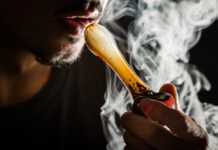



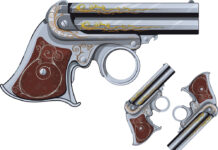




![What Level Holster Should You Be Using? [Video]](/wp-content/uploads/2024/04/Depositphotos_44548439_S-218x150.jpg)
![Case Study: Defensive Gun Use [Video] NSFW](/wp-content/uploads/2025/07/Depositphotos_282075792_S-218x150.jpg)
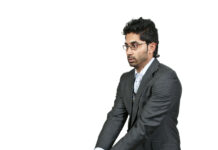






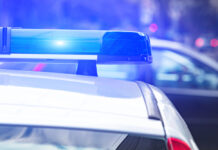
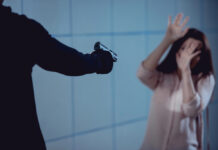










![Optic Ready vs Milled slides? [Video]](/wp-content/uploads/2024/02/image-3-100x70.png)
![[Checklist] What Gear You Need To Take Pistol, Rifle & Shotgun Training Courses [Video]](/wp-content/uploads/2023/07/Depositphotos_275087632_L-100x70.jpg)
![What is in Carter’s 2023 EDC? [Video]](/wp-content/uploads/2023/07/Depositphotos_146856137_L-100x70.jpg)


